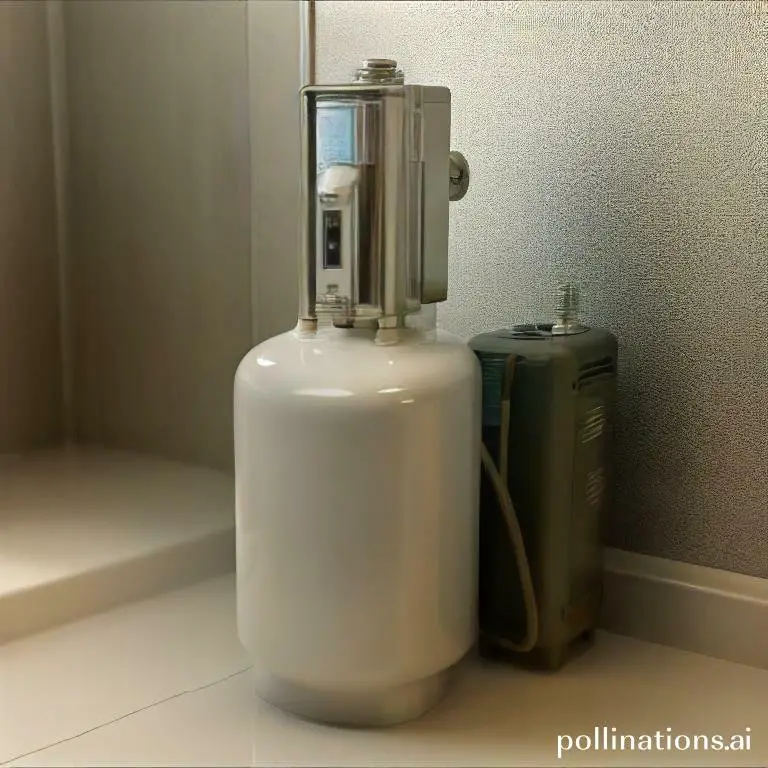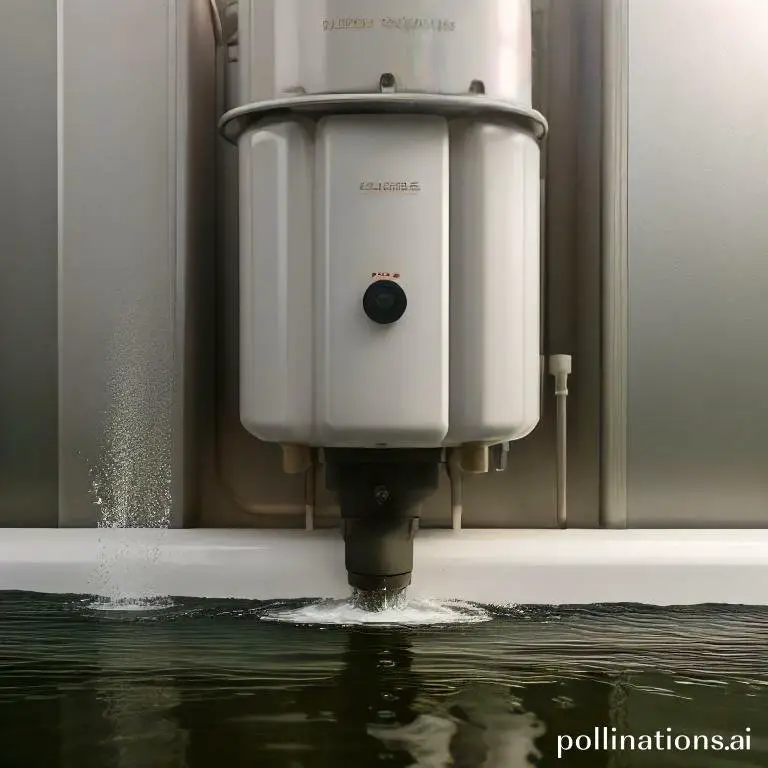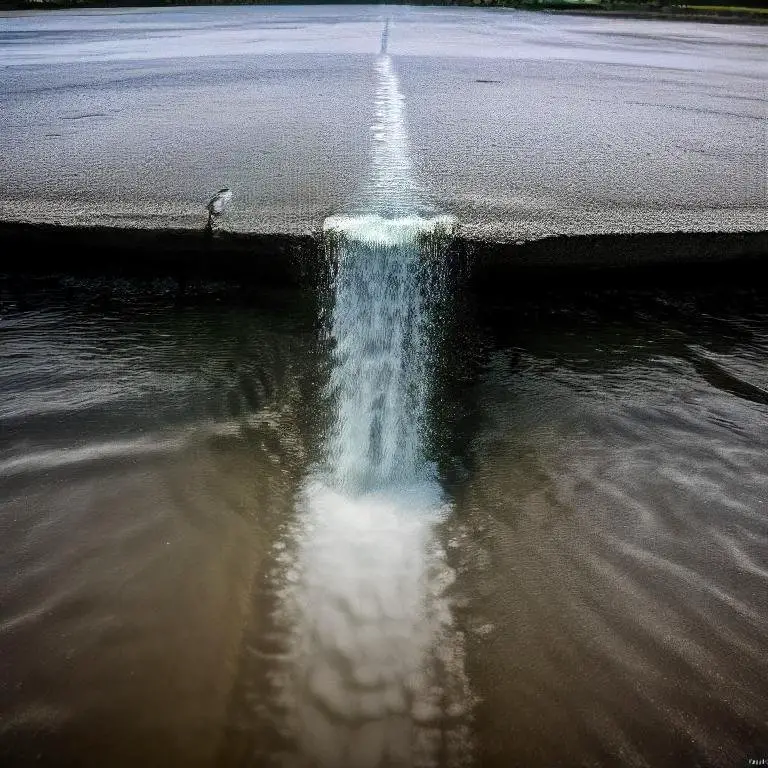
II. The sediment can insulate the temperature sensors, causing them to inaccurately read the water temperature and leading to overheating or underheating.
III. Regular maintenance, such as flushing the water heater and installing a sediment filter, can help prevent sediment buildup and protect electronic controls.
Sediment buildup can have a significant impact on the electronic controls of water heaters. As water flows through the tank, minerals and sediment can accumulate, leading to various issues.
These deposits can interfere with the proper functioning of the electronic controls, causing temperature fluctuations, reduced efficiency, and even damage to the system. Regular maintenance and flushing of the water heater can help prevent sediment buildup and ensure the electronic controls continue to operate smoothly.
By confronting this issue, homeowners can avoid costly repairs and maintain the optimal performance of their water heating system.
What is sediment?
Sediment refers to any solid material that settles at the bottom of a liquid, typically water. It is composed of various particles, such as sand, silt, clay, and minerals, that are carried by water or wind and eventually deposited in different bodies of water, including water heaters.
1. Definition of sediment
Sediment can be defined as the accumulation of solid particles that separate from a liquid medium. These particles vary in size and composition, ranging from fine grains to larger debris. Sediment can originate from natural processes, such as erosion and weathering, or from human activities, such as construction and industrial processes.
2. Types of sediment commonly found in water heaters
Water heaters are often prone to sediment buildup, which can affect their performance and efficiency. Common types of sediment found in water heaters include:
| Type of Sediment | Description |
|---|---|
| Sand | Coarse particles that can enter the water supply through the main water line or from the ground. |
| Silt | Finer particles that are carried by water and settle more slowly than sand. |
| Clay | Extremely fine particles that can cause clogging and reduce the efficiency of the water heater. |
| Minerals | Deposits of minerals, such as calcium and magnesium, commonly known as scale, that form due to hard water. |
3. How sediment affects electronic controls
Sediment buildup in water heaters can have detrimental effects on electronic controls. The presence of sediment can interfere with the proper functioning of sensors and valves, leading to inaccuracies in temperature regulation and water flow. This can result in reduced energy efficiency, increased wear and tear on the system, and potential malfunctions of the electronic components.
Regular maintenance, including flushing out sediment from the water heater, is essential to prevent these issues and ensure optimal performance.
Signs of sediment buildup in water heaters
Water heaters are essential appliances in any home, providing hot water for various activities such as bathing, cooking, and cleaning. Although, over time, sediment buildup can occur inside the water heater, leading to various issues. Integral to be aware of the signs of sediment buildup to ensure the efficient and safe operation of your water heater.
1. Reduced hot water supply
One of the first signs of sediment buildup in a water heater is a reduced hot water supply. As sediment accumulates at the bottom of the tank, it takes up space that would otherwise be filled with hot water. This can result in less hot water being available for use, leading to inconvenience and discomfort.
2. Strange noises coming from the water heater
If you notice strange noises, such as popping or cracking sounds, coming from your water heater, it may be a sign of sediment buildup. As the sediment heats up and hardens over time, it can create a barrier between the heating element and the water, causing the water to boil and create these noises. Ignoring these sounds can lead to further damage to the water heater.
3. Discolored water
Sediment buildup can also cause the water coming out of your taps to become discolored. If you notice a brown or rusty color in the hot water, it is likely due to sediment mixing with the water. This not only affects the water’s appearance but can also impact its quality. Pivotal to address this issue promptly to prevent any potential health risks.
4. Increased energy bills
Another sign of sediment buildup in water heaters is an increase in energy bills. As sediment accumulates, it acts as an insulating barrier, making the water heater work harder and consume more energy to heat the water. This can lead to higher energy bills, which can be avoided by tackling the sediment buildup issue.
5. Leaks around the water heater
In the end, if you notice any leaks around your water heater, it could be a result of sediment buildup. Sediment can cause corrosion and damage to the internal components of the water heater, leading to leaks. If left unattended, these leaks can cause further damage and potentially require expensive repairs or even replacement of the water heater.
Prevention of Sediment Buildup in Water Heaters
Sediment buildup in water heaters can lead to various problems such as reduced efficiency, increased energy consumption, and even damage to the unit. To ensure that your water heater operates smoothly and efficiently, it is crucial to take preventive measures to minimize sediment buildup. Here are some effective strategies:
1. Regular Flushing of the Water Heater
Flushing your water heater regularly is essential to remove accumulated sediment. This process involves draining the tank to eliminate any debris or sediment that has settled at the bottom. By flushing your water heater at least once a year, you can prevent sediment buildup and maintain optimal performance.
2. Installation of a Sediment Filter
An additional measure to prevent sediment buildup is the installation of a sediment filter. This filter is designed to trap sediment particles before they enter the water heater, reducing the amount of debris that accumulates in the tank. By installing a sediment filter, you can significantly extend the lifespan of your water heater and improve its overall efficiency.
3. Use of a Water Softener
Hard water contains high levels of minerals, such as calcium and magnesium, which contribute to sediment buildup. Using a water softener can help prevent this issue by removing these minerals from the water before it enters the heater. By softening the water, you can minimize sediment accumulation and empower the performance and longevity of your water heater.
4. Consideration of a Tankless Water Heater
If sediment buildup is a recurring problem, you may want to consider switching to a tankless water heater. Unlike traditional tank-based heaters, tankless models do not store water, eliminating the risk of sediment accumulation altogether. This can save you from the hassle of regular maintenance and ensure a constant supply of clean, sediment-free hot water.

Impact of Sediment Buildup on Electronic Controls
In the realm of the functionality of electronic controls in water heaters, sediment buildup can have a significant impact. Embracing the potential consequences is essential for homeowners to ensure proper maintenance and avoid costly repairs or replacements. In this section, we will ponder the various ways sediment buildup can affect electronic controls, from short circuits to total breakdowns.
1. Short Circuits
Sediment buildup within a water heater can lead to short circuits in the electronic controls. As sediment accumulates at the bottom of the tank, it can come into contact with the electrical components, causing a disruption in the circuitry. This can result in the water heater malfunctioning or completely shutting down.
2. Burnt Wires
Another consequence of sediment buildup is the potential for burnt wires. As sediments settle at the bottom of the tank, they can create a layer of insulation around the heating element. This insulation can cause the wires to overheat, leading to burnt wires and compromised electrical connections. Burnt wires not only affect the performance of the water heater but also pose a safety risk.
3. Failure of Electronic Components
The presence of sediment can also lead to the failure of electronic components in the water heater. Sediments can infiltrate sensitive parts, such as sensors or control boards, causing them to malfunction or become unresponsive. This can result in inaccurate temperature readings, erratic behavior of the water heater, or complete failure of the electronic components.
4. Total Breakdown of the Water Heater
If sediment buildup is left unaddressed, it can eventually lead to the total breakdown of the water heater. As sediments continue to accumulate, they can restrict water flow, reduce heating efficiency, and put additional strain on the electronic controls. Eventually, the water heater may become completely inoperable, requiring costly repairs or replacement.
| Impact | Consequence |
|---|---|
| Short Circuits | Malfunction or shutdown of the water heater |
| Burnt Wires | Compromised electrical connections and safety risks |
| Failure of Electronic Components | Inaccurate temperature readings and erratic behavior |
| Total Breakdown | Inoperable water heater requiring repairs or replacement |

Repair and Replacement of Electronic Controls
1. Importance of Hiring a Professional
Touching on the repair and replacement of electronic controls, it is crucial to hire a professional who possesses the necessary expertise and experience in handling such delicate tasks. Electronic controls play a vital role in the functioning of various devices and systems, ranging from household appliances to industrial machinery. Attempting to repair or replace these controls without proper knowledge can result in further damage or even pose safety risks.
2. Cost of Repair and Replacement
When considering the repair or replacement of electronic controls, it is essential to weigh the cost implications. During some minor repairs may be cost-effective, certain situations may require complete replacement. Factors such as the age of the controls, availability of spare parts, and complexity of the issue can influence the overall cost.
In the course of it may be tempting to opt for cheaper alternatives or DIY solutions, it is crucial to consider the long-term effects. Improper repairs or low-quality replacements can lead to recurring issues and additional expenses in the future. Investing in professional repair or replacement ensures the longevity and optimal performance of your electronic controls.
3. Factors to Consider When Choosing a Repair Service
When selecting a repair service for your electronic controls, there are several factors to consider. First and foremost, reputation and reliability are essential. Look for service providers with positive customer reviews and a track record of delivering satisfactory results.
Experience and expertise in handling electronic controls is another crucial factor. Ensure that the repair service has specialized knowledge in the specific type of controls you need assistance with. They should be familiar with the latest technologies and industry standards.
Additionally, consider the warranty offered by the repair service. A reputable service provider will provide a warranty on their repairs or replacements, giving you peace of mind and protection against future issues.
To make an informed decision, it is advisable to obtain multiple quotes from different repair services. Compare their prices, services offered, and customer support before making a final choice.
Table 1: Comparison of Repair Service Options
| Repair Service | Price | Expertise | Customer Reviews | Warranty |
|---|---|---|---|---|
| Service Provider A | $X | ✓✓✓✓ | ★★★★★ | 1 year |
| Service Provider B | $Y | ✓✓✓ | ★★★☆☆ | 6 months |
| Service Provider C | $Z | ✓✓ | ★★☆☆☆ | 3 months |
Bottom Line
Relating to sediment impact on water heater electronic controls, prevention is key. Regular maintenance and flushing of the tank can help prevent sediment buildup and prolong the life of your water heater. If you do experience issues with your electronic controls, it’s important to address them promptly to avoid further damage or safety hazards. Consulting a professional plumber or electrician is recommended for any repairs or replacements needed. Remember, taking care of your water heater can save you money in the long run and ensure a reliable source of hot water for your home.
Overall, sediment buildup in your water heater can have a significant impact on the electronic controls. By staying vigilant and taking preventative measures, you can avoid costly repairs and ensure your water heater operates efficiently and safely.
Read More:
1. Sediment Removal Frequency For Vintage Water Heaters
2. Sediment Impact On Water Heater Heat Exchanger Efficiency










